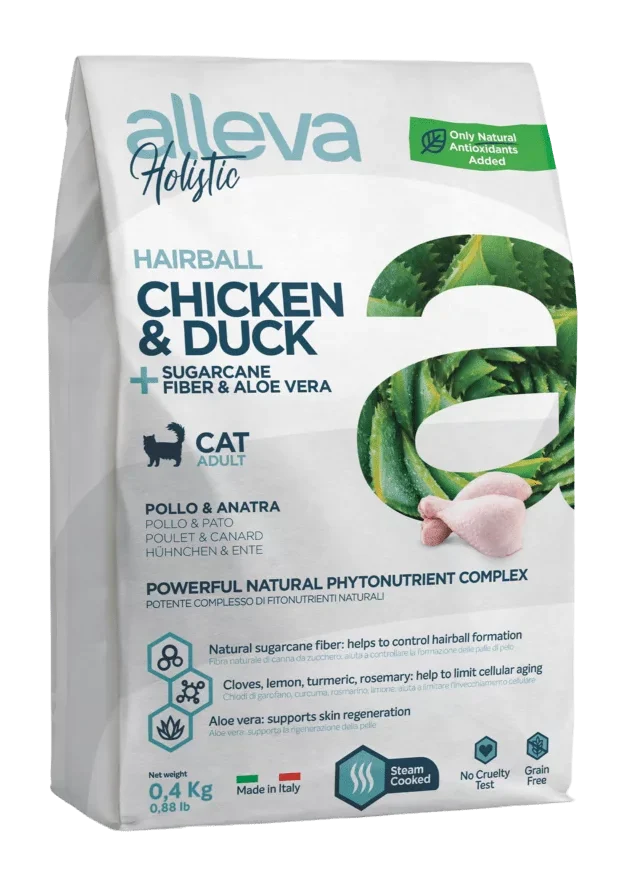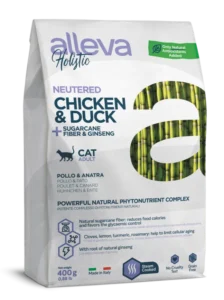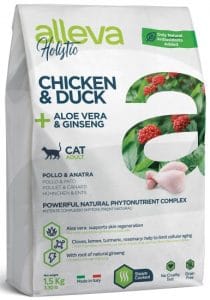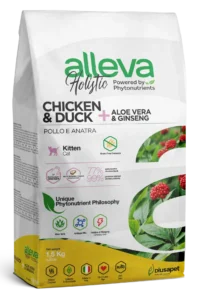Alleva Holistic
Hairball Chicken & Duck + Sugarcane Fiber & Aloe Vera
Adult
Hairball
Indoor and Outdoor
Grain-Free
Click to reveal the score breakdown
Tap to view ingredients, guaranteed analysis and more
Ingredients
Dehydrated chicken
42%
Deboned fresh chicken
20%
Dehydrated duck
12%
Sweet potato
Chicken fat
Sugarcane fiber
7%
Pea starch
Fish oil
Pea fiber
Chicken liver
and also:
Chicory root (source of inulin and FOS), Psyllium, Dried inactivated brewers’ yeast (source of MOS),, Chicken cartilage (source of glucosamine and chondroitin), Potassium carbonate, Aloe vera (0.1%), Rosemary, turmeric, Cloves, Lemon (Rosmarinus officinalis Curcuma longa Eugenia caryophyllus (0.05%), Yucca juice
Guaranteed Analysis
Crude Protein
42%
Crude Fat
18%
Crude Fiber
8%
Moisture
7%
Crude Ash
8.9%
Calcium
1.6%
Phosphorus
1.3%
Magnesium
0.09%
Omega 3
1.2%
Omega 6
2.4%
Metabolizable Energy
3737 kcal/kg
Product last updated: July 16, 2024, 8:32 AM
Please hold on while we’re getting the best offers for you
6973



